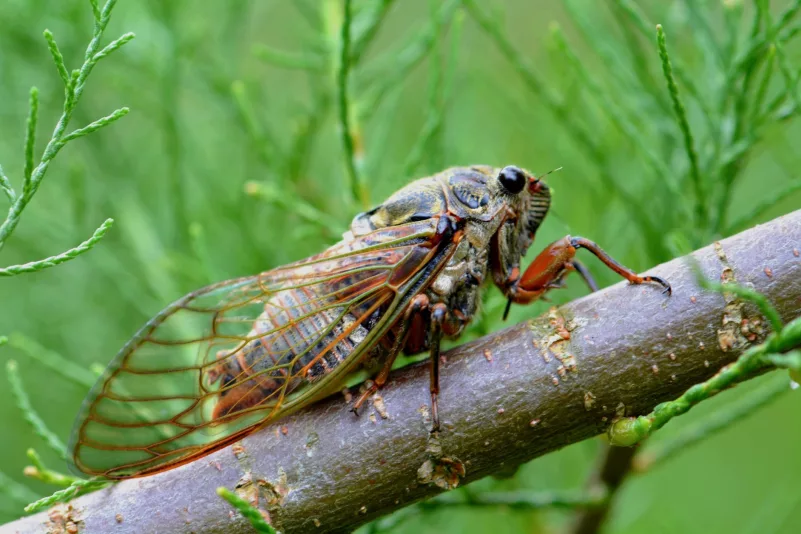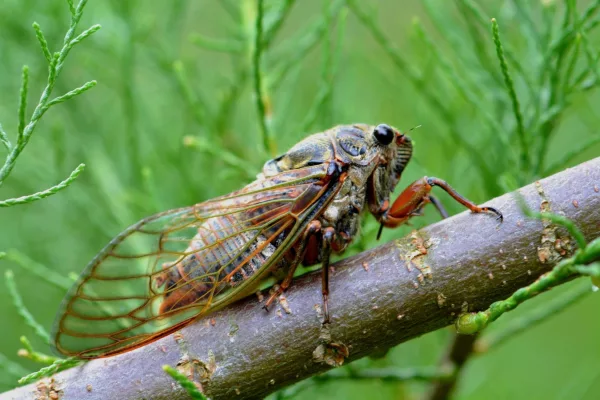
Kentucky will be the epicenter for the emergence of Brood 14 of 17-year periodical cicadas this spring, which have been designated the “Bourbon Brood” by University of Kentucky Martin-Gatton College of Agriculture, Food and Environment entomologists.
Periodical cicadas have appeared in western Kentucky counties over the past few years, but the largest emergence area for 2025 will occur across most of central and eastern Kentucky.
According to Jonathan Larson, assistant extension entomology professor at UK Martin-Gatton CAFE, the 17-year periodical cicadas emerge from the soil to molt into their flying, adult form in late April to early May, much earlier than annual cicadas.
“We will begin seeing this brood of cicadas when the soil warms to the mid-60s, about the same time you start to see iris blooms,” Larson said. “A lot of people hate them, but I hope they will learn to appreciate them as periodical cicadas are such a rarity.”
Larson explained that the periodical cicada nymphs live in the soil, feeding on the sap of tree roots. They count their feeding cycles to know when to emerge and prepare for molt. Not all cicadas appear in the correct year; those that do not are referred to as stragglers.
Cicadas are not harmful to humans, pets or wildlife, as they do not bite or sting. While some may compare cicadas to locusts, Larson said they do not swarm and cause massive plant damage. Adult cicadas feed on sap with little impact to the plant.
Local wildlife, such as snakes, foxes and turkeys, will benefit from the extra protein provided by the cicadas. Although Larson mentioned that the surge in cicada numbers won’t immediately boost the population of predatory animals in high-emergence areas, it will likely lead to increased feeding activity, so he advises people to be aware.
In addition to the many nymph exoskeleton shells left behind on tree trunks and nearby objects, the adult male cicadas’ sound will be difficult to avoid.
Female cicadas will bore their ovipositor into young, tender tree or shrub branches and deposit 200-600 eggs. While using insecticides may be less costly, Larson said the safest and most effective way to prevent tree and shrub damage is by using cicada netting, which prevents females from laying their eggs, especially on smaller or new trees.
By Tom Latek, Kentucky Today









